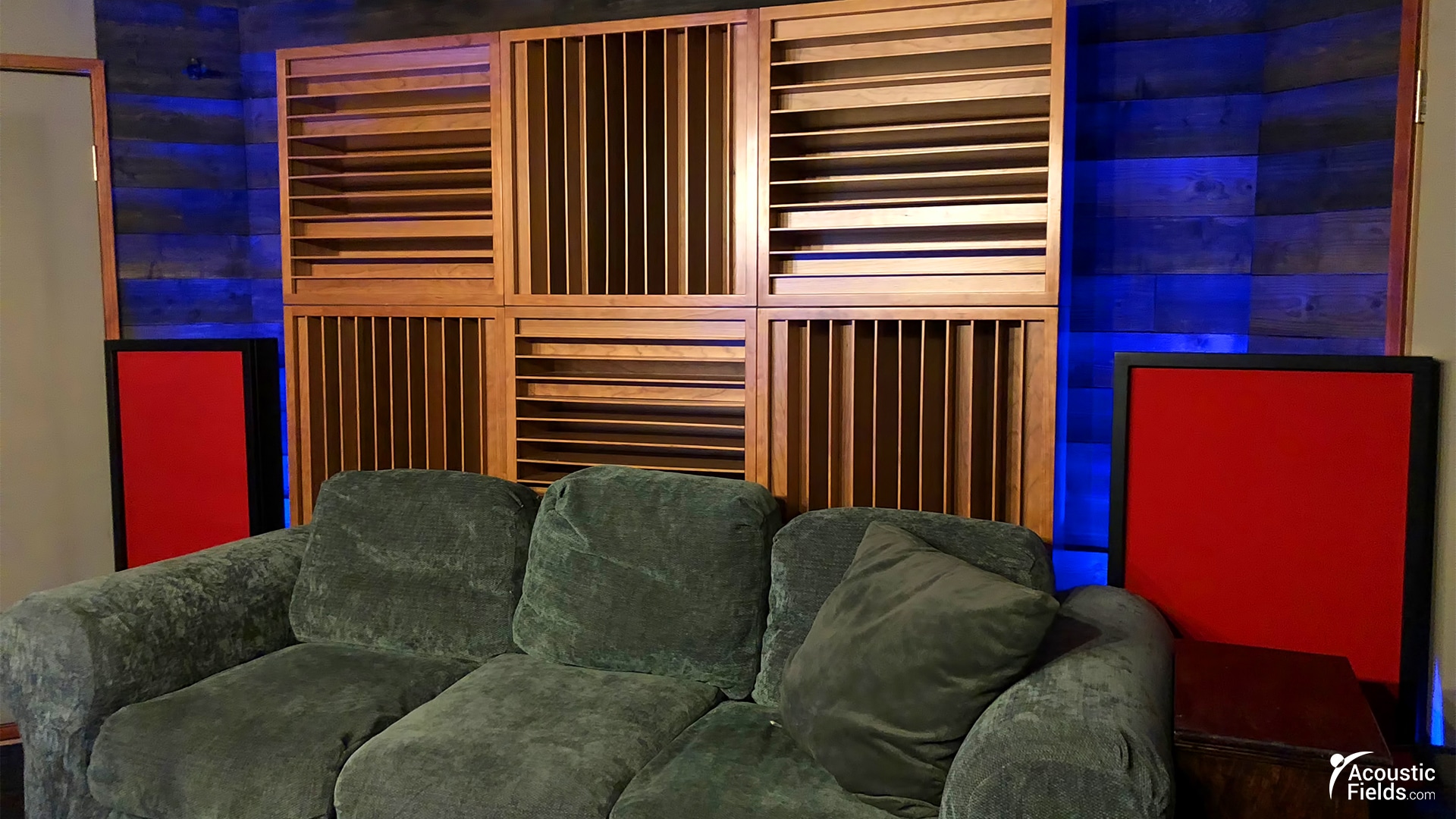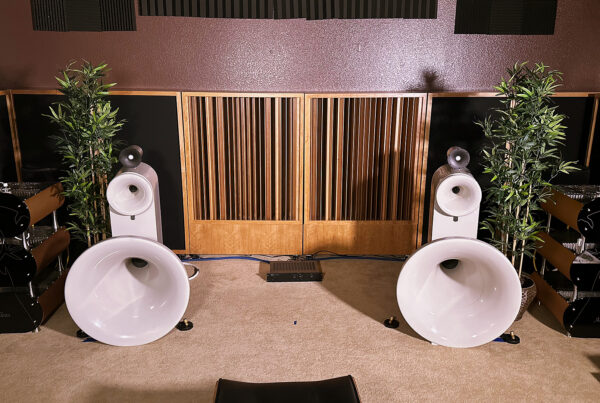Acoustic Design Project
Bill Malina
Grammy & Emmy nominated recording &
mixing engineer based in Los Angeles, CA.
Bill Malina is a working engineer in Los Angeles. You can see by his credits, that he has worked with some of the most prominent musicians in their respective genres. Bill knows his music and more importantly for this project, he knows his room sound. He knows the strengths of his room and he knows its weaknesses. Bill consented to move some of our carbon units into his room. He also agreed to one-dimensional diffusion for his rear wall to replace the sound redirection units he was currently using. We moved in ACDA-10 and ACDA-12 module units along with QD-13 one dimensional diffusion for the rear wall.
Making the rear wall disappear
Bill has the technology to listen to for a month and then we moved it to another studio. This is the demo process we go through in LA. We have demo units that we rotate from engineer to engineer. They keep them for one month and then we move them to other locations. Bill went through existing sound redirection treatment on the rear wall to one-dimensional diffusion based upon prime number 13. The second demo set up consisted of two-dimensional diffusion based upon Prime 13. In the video, you can hear where Bill says that the rear wall disappears. This is the function of diffusion and especially two-dimensional diffusion on the rear wall. Where do we start with treatment?
When you are using pressure activated technology like our diaphragmatic absorption technology, you must first look to the area of highest pressure. In almost all small rooms, this area of highest pressure is between the front wall and the speakers. Bill’s room was no different and we started with our ACDA -12 module units on the front wall under the console and along the side walls. The ACDA-12 unit is more frequency specific operating from 30 – 50 Hz. This frequency range issue is found in 100 % of audio rooms regardless of the specific usage. We use a blend of ACDA – 10 and ACDA – 12 modules in all small audio rooms.

Working with a mix of ACDA units
Every small room is different in the amount of energy placed into it and the amount of energy it can handle correctly. The amount and type of existing low-frequency treatment have a direct impact on all of these variables. There is a balance between the frequency specific ACDA-12 units and our broadband ACDA – 10 units. We have found that a mix of 40 % ACDA-12 units and a 60 % of ACDA-10 units work best in most small rooms where pressure levels average around 85 dB SPL. With the foam on the face of each ACDA-10 unit, you have broadband absorption from 30 – 6,500 Hz. These absorption rates and levels are designed for music and voice, not to keep your room warm or cool.
The rear wall of the room is next with a series of ACDA -12 modules as the base for the diffusers. Diffusion must be uncovered and unhindered just like a speaker. You can not have anything in between you and the diffuser. Acoustic diffusers are not active devices that produce energy through a powered source. They are purely passive devices that take reflected energy and expels it back into the room based upon the frequency response of the diffuser which is based on the distance from the diffuser to the listening position. All distance and position variables must be calculated and diligently subscribed to. You must have enough distance from the diffuser to your ears to allow for the lowest octave to fully form.


ACDA Modules
The ACDA -10 Modules are broadband absorbers that absorb energy from 30 – 6500 Hz. with an average coefficient of 25 % / octave. The ACDA -12 modules absorb from 30 Hz. – 50 Hz. with 35 % at 35, 63 % at 40, and 100 % at 50 Hz.
These are the most powerful absorbers every created. Each 24″ x 24″ x 12″ module weighs 65 lbs and incorporates our carbon and foam technologies. Using modular units of the ACDA, we can calculate the amount of units needed until sufficient low frequency absorption is reached for the specific room size, volume and usage.
Do you want to solve your room acoustic problems?
There’s no one size fits all when it comes to room acoustics.
Get your FREE personal room acoustics analysis by chief acoustics engineer Dennis Foley.





